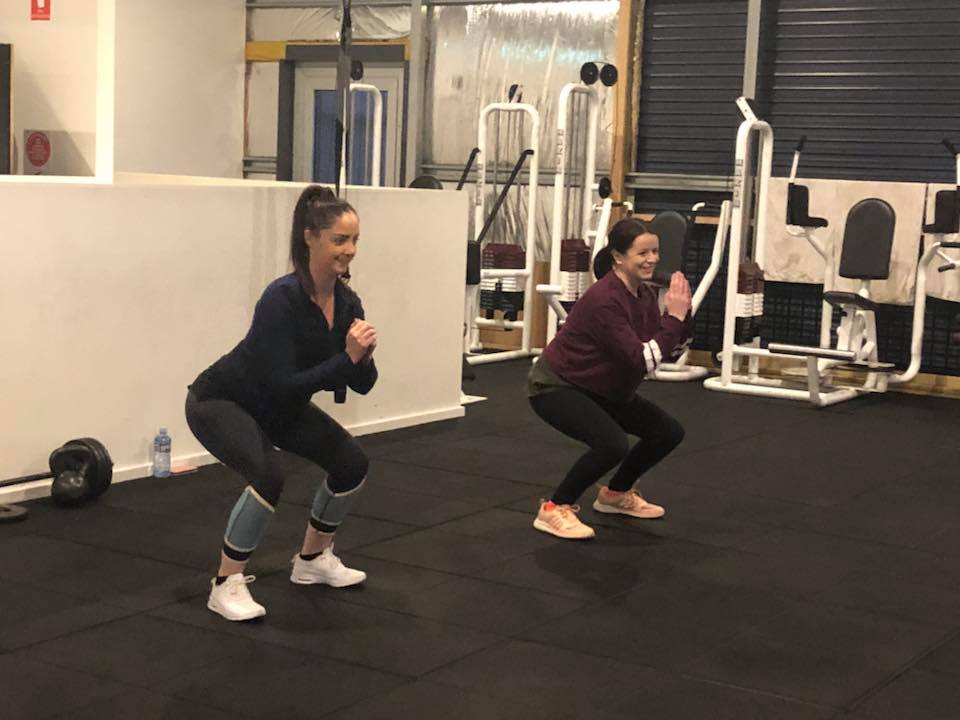
Start small to help you make the shift from being sedentary into active. Start small and add new activities to your daily schedule. Remember to celebrate your victories along the way. Before starting any exercise program, it is a good idea to check with your doctor. A good place to start is far away from the grocery store if you are sedentary. You can walk through every aisle of the grocery shop, even if nothing is purchased.
Start by increasing the amount of exercise you do. Walking is a great way of increasing your physical activity. Beginners should only do two sessions of twenty minutes each day. For a higher level of fitness, you can add ten more minutes each day. You must drink lots of fluids during, after, and before your workout. For beginners, take a few walking sessions each week to increase your fitness.

You spend most of your time sitting if that's you. To be more active, you must change your eating habits. Poor nutrition is not something that can be replaced by exercise. It is essential to eat healthy in order to increase your level of physical activity. It might be worth joining a gym or running club. You will feel happier and more energetic throughout the day thanks to these programs.
An exercise program that is effective should incorporate physical activity as well as healthy eating habits. Healthy eating habits are essential to a healthy lifestyle. Regular exercise improves mental health and mood. To increase your heart rate, you can go for a walk or run. By making these small changes in your daily habits, you can drastically increase your physical activity. Your body will appreciate the effort. Move from being sedentary and become active to maintain your health.
You will need to make an effort to live a more active lifestyle. However, it is possible to start by changing your routine. This requires a willingness to commit and the ability change your habits. You should also establish a daily exercise routine. You'll notice positive changes almost immediately after you have established a routine. This is a simple, but effective way to get on track again and improve your health.

You can add a third set to your workout routine if you are sedentary. It is also a good idea to increase your walk time from 30 minutes to 45 minutes. Doing this will make you a regular participant in physical activity for a lifetime. This will allow you to lose weight quickly and maintain it for a long period of time. You'll be amazed at the amount of weight you will lose.
FAQ
What are the best 10 foods to eat?
These are the top 10 foods to eat.
-
Avocados
-
Berries
-
Broccoli
-
Cauliflower
-
Eggs
-
Fish
-
Grains
-
Nuts
-
Oats
-
Salmon
How do I get enough vitamins?
You can obtain most of your daily requirement through diet alone. Supplements can be helpful if you are lacking in any one vitamin. You can take a multivitamin supplement that contains all the vitamins you need. You can also buy individual vitamins at your local pharmacy.
Talk to your doctor about the best foods for vitamins if you're concerned about not getting enough nutrients. Some examples of rich sources of vitamins E and K include dark green leafy vegetables, such as spinach.
Ask your doctor if you're not sure how many vitamins you should take. Based on your medical history and your current health, your doctor can recommend the correct dosage.
What's the best diet?
Your lifestyle and individual needs will determine the best diet for your body. You should also consider how much energy your exercise consumes, whether you like low-calorie or high-calorie foods, and what you enjoy in terms of eating fruits and veggies.
Intermittent fasting may be a good choice if you want to lose weight. Intermittent fasting is a way to eat only certain meals during the day instead of three large meals. This might be better for you than traditional diets, which have daily calorie counts.
Intermittent fasting has been shown to improve insulin sensitivity, reduce inflammation and lower the risk of developing diabetes. Research also shows that intermittent fasting may increase fat loss and improve overall physique.
What's the difference between a calorie and kilocalorie?
Calories refer to units that are used for measuring the energy in food. A calorie is a unit of measure. One calorie represents the energy required to raise one gram of water's temperature by one degree Celsius.
Kilocalories are another term for calories. Kilocalories are expressed in thousandths (or a calorie). 1000 calories, for example, equals one kilocalorie.
Statistics
- According to the Physical Activity Guidelines for Americans, we should strive for at least 150 minutes of moderate intensity activity each week (54Trusted Source Smoking, harmful use of drugs, and alcohol abuse can all seriously negatively affect your health. (healthline.com)
- This article received 11 testimonials and 86% of readers who voted found it helpful, earning it our reader-approved status. (wikihow.com)
- In both adults and children, the intake of free sugars should be reduced to less than 10% of total energy intake. (who.int)
- According to the 2020 Dietary Guidelines for Americans, a balanced diet high in fruits and vegetables, lean protein, low-fat dairy and whole grains is needed for optimal energy. (mayoclinichealthsystem.org)
External Links
How To
What does the meaning of "vitamin?"
Vitamins can be described as organic compounds found in food. Vitamins are necessary for us to absorb nutrients in the foods we consume. Vitamins cannot be produced by the body. They must be acquired from food.
There are two types vitamins: water soluble or fat soluble. Water soluble vitamins dissolve easily in water. You can find vitamin C,B1 or thiamine, B2 or riboflavin and B3 or niacin, B3/niacin, B6/pyridoxine, folic Acid, biotin and pantothenic Acid as examples. The liver and fatty tissues are home to fat-soluble vitamins. You can find vitamin D, E K, A, beta carotene, and other fat-soluble vitamins.
Vitamins are classified according to their biological activity. There are eight major vitamin groups:
-
A - essential for normal growth and maintenance of health.
-
C - essential for nerve function and energy generation.
-
D - Essential for healthy teeth and bones.
-
E is required for good vision and reproduction.
-
K - essential for healthy muscles, nerves, and bones.
-
P - Vital for strong bones and teeth.
-
Q - Aids digestion and iron absorption
-
R - Required for red blood cell production
The recommended daily allowance (RDA), for vitamins, varies depending upon age, gender, or physical condition. The U.S. Food and Drug Administration has established the RDA values.
For adults over 19, the RDA for vitaminA is 400 micrograms per daily. Because it is essential for the development of the fetus, pregnant women should consume 600 micrograms per daily. Children ages 1-8 require 900 micrograms per day. Infants below one year old require 700mg per day. But, between 9 months to 12 months, the amount drops to 500mg per day.
Children aged 1-18 years need 800 micrograms daily, while children overweight require 1000 micrograms per days. Children who are severely obese or underweight will need 1200 micrograms each day.
Children 4-8 years old who have anemia must consume 2200 micrograms of Vitamin C daily.
2000 micrograms is the minimum daily intake for adults over 50 years old to maintain good health. Breastfeeding or pregnant women require 3000 micrograms per daily due to higher nutrient demands.
1500 micrograms are required daily by adults over 70 because they lose approximately 10% of their muscle each decade.
Women who have been pregnant or are lactating require more than the RDA. Pregnant women need 4000 micrograms per dayduring pregnancy and 2500 micrograms per day after delivery. Breastfeeding mothers need to consume 5000 micrograms every day when breastmilk has been produced.